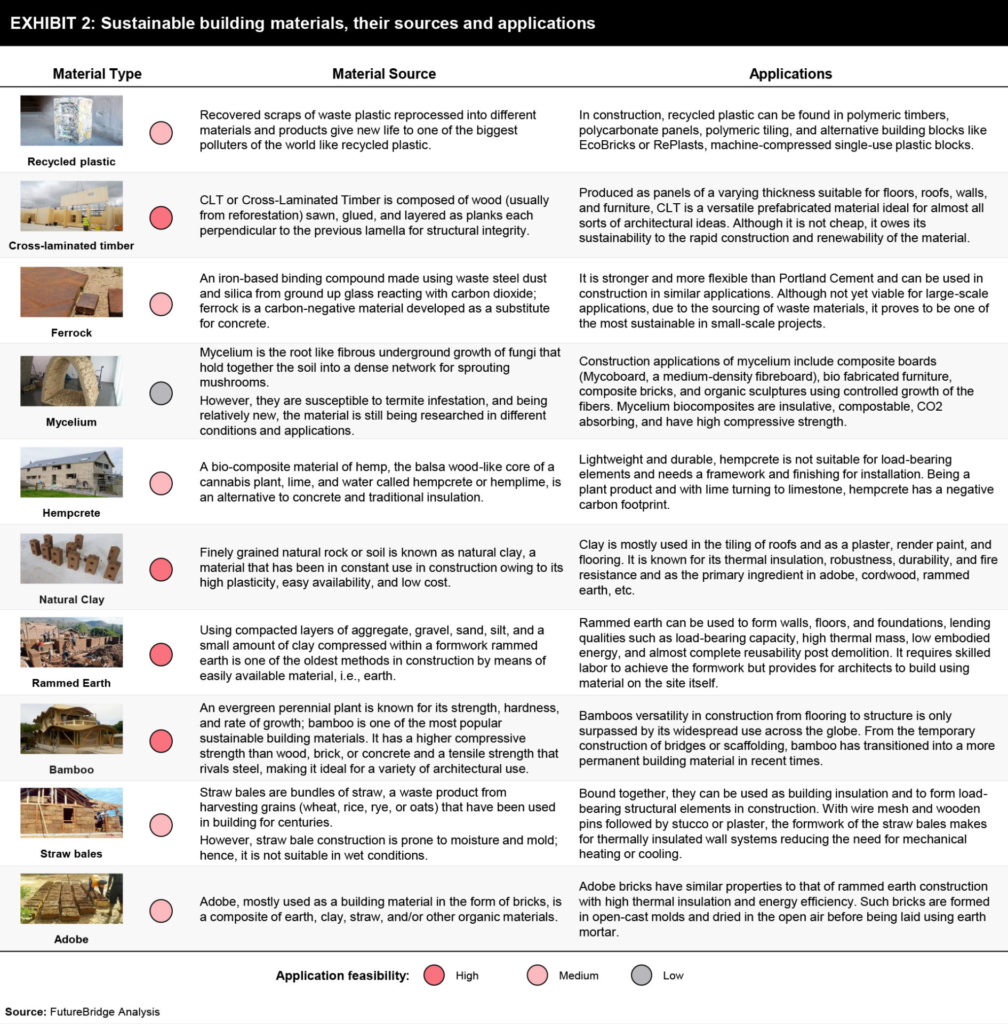Sustainable Building Materials
Listen to this Article
mins | This voice is AI generated.
mins | This voice is AI generated.
How sustainable building materials can be used for different applications
What is meant by sustainable building material?
Constructing with sustainable materials is not only good for the planet and common sense, it can save the client money, help preserve our heritage, respond to planning policies and help get credits in BREEAM, LEED, and other environmental assessment tools.
Sustainable material is one that:
In practice, both these objectives are impossible to achieve, but they do show us the direction we should aim.
We can preserve natural resources in many ways:
We can reduce the impact on the environment of using construction materials by:



Tools and techniques for selecting construction materials that are less damaging to the environment
Detailed analysis of the impacts of materials using these techniques can then be reduced to relatively straightforward guidance for the designer or specifier, for example:
Another approach is to tackle the use of materials by adopting a strategic and hierarchical approach to decisions – beginning with the ‘best’ from an environmental point of view, then the next best, and so on.
For example:
Choose materials and construction techniques that progress from:
Re-use materials or components in situ:
Use reclaimed materials or components with little processing:
Use manufactured materials or components with significant and known recycled content:
Use natural materials that have low embodied energy and/or environmental impact:
Sustainable building materials are those which are produced or sourced locally. These materials are containing recycled & industrial waste materials and by-products. Sustainable materials have a lower impact on the environment & are thermally efficient. The production of these building materials requires considerably less amount of energy in production when compared to modern or traditional construction materials.
The advantages in the selection of sustainable building materials lie in the fact that they are not only economically viable but also reduce toxic emissions thereby reducing overall environmental impact. Sustainable building materials & technology should be utilized appropriately & contextually in each neighborhood development. The use of sustainable material & technology not only reduces transport & production costs, carbon emissions but also provides avenues for employment & skill development for community members.
References
Share your focus area or question to engage with our Analysts through the Business Objectives service.
Submit My Business ObjectiveOur long-standing clients include some of the worlds leading brands and forward-thinking corporations.




























